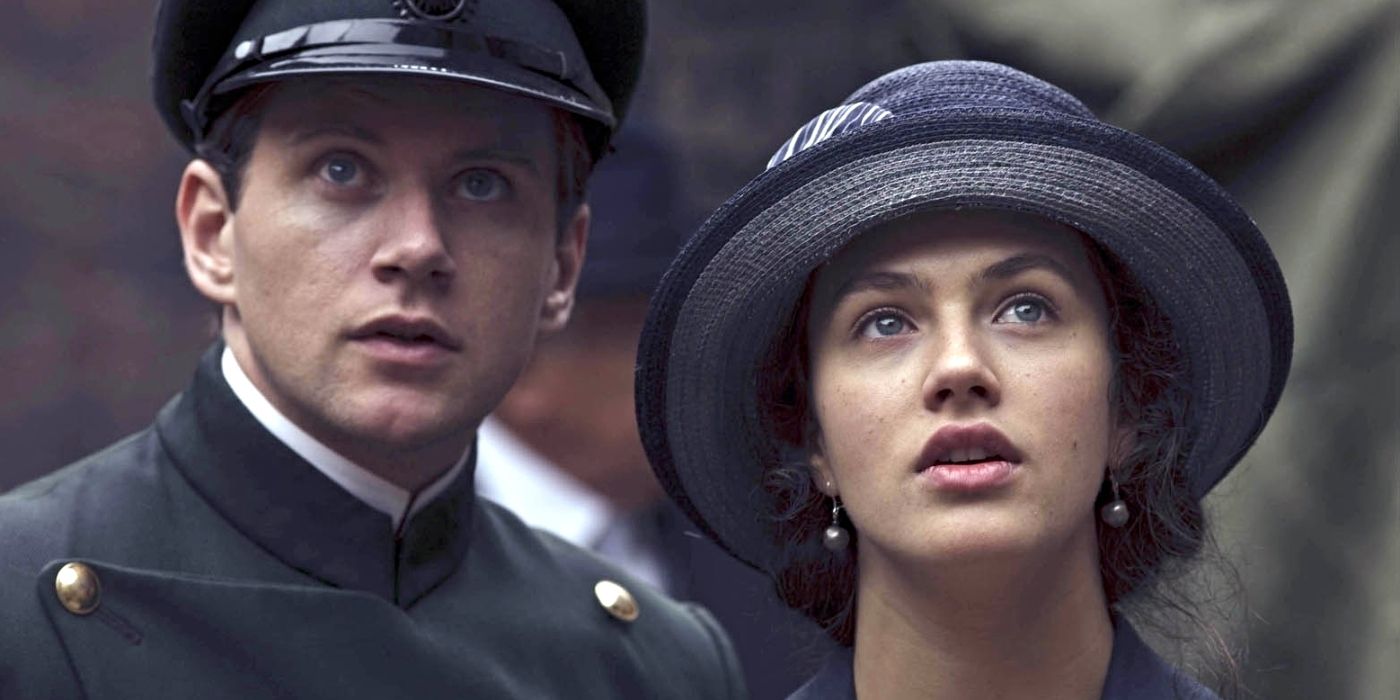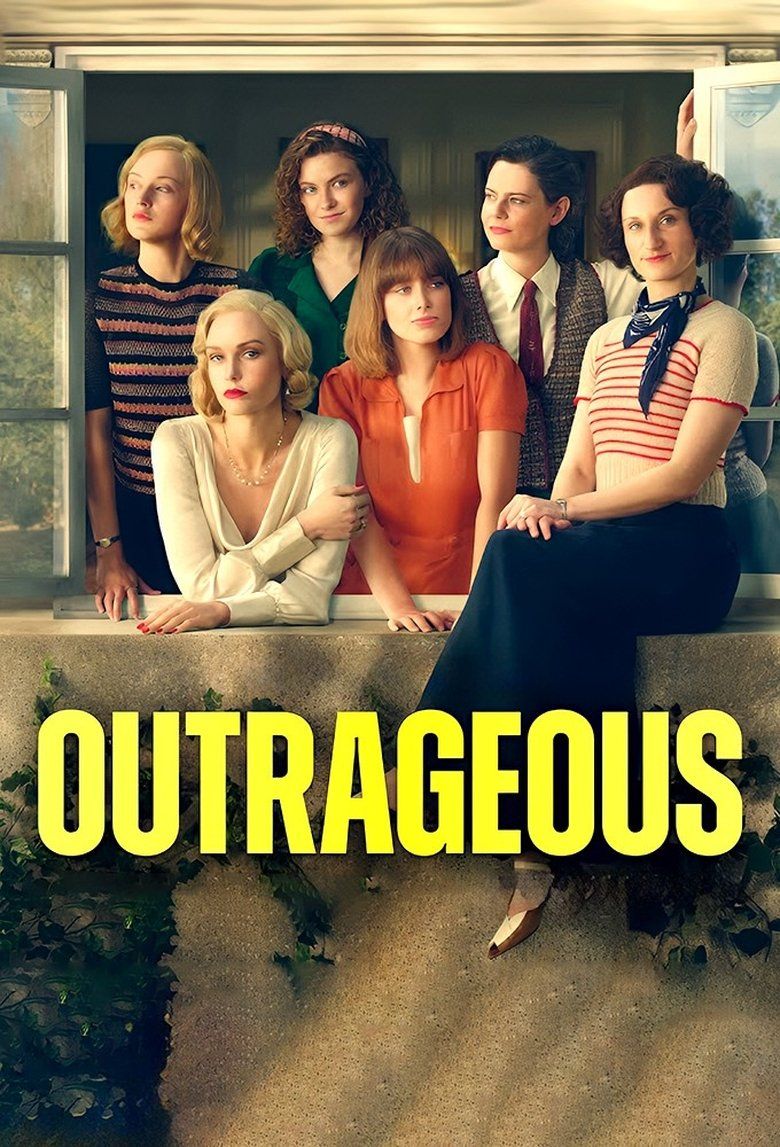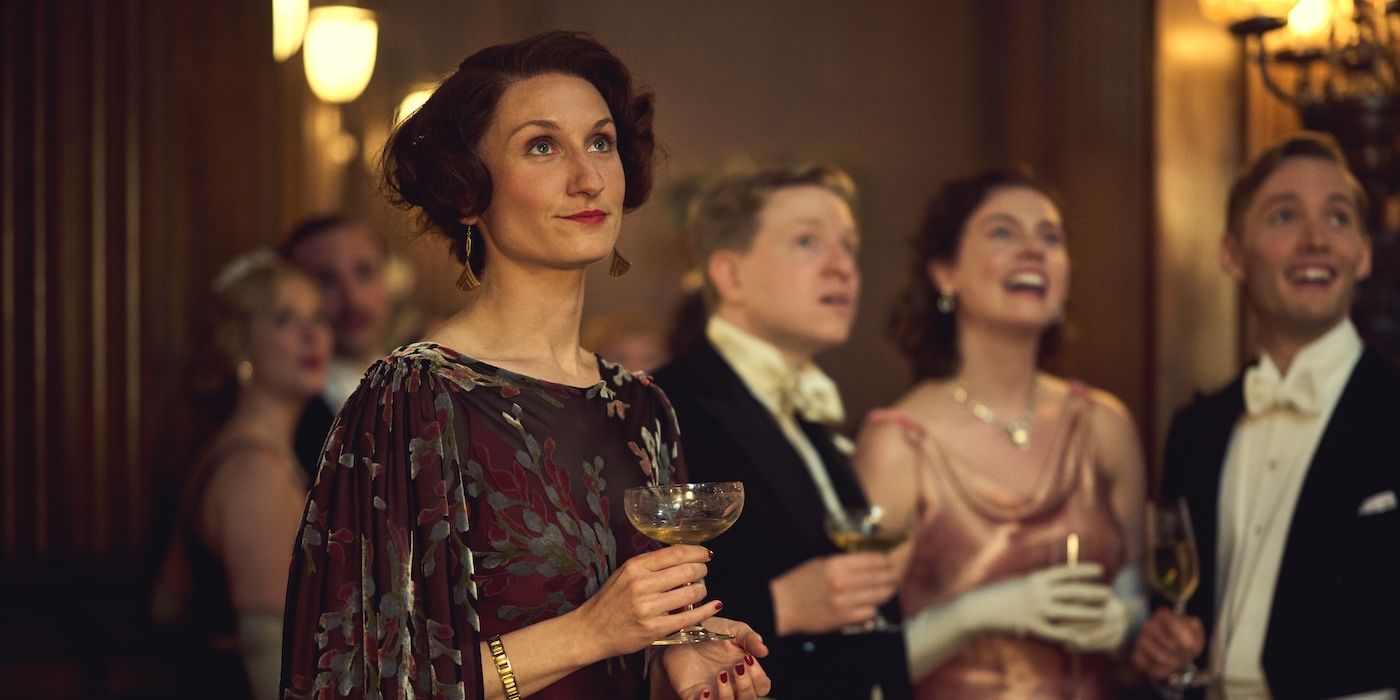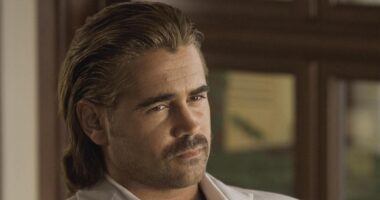If you’ve been paying attention to our current television landscape, the past few years have more than proven that there is a huge audience for stories about British aristocracy. Hit shows like Downton Abbey and The Crown have renewed an interest surrounding the lives of the obscenely rich and powerful, particularly around the early 20th century, that has never quite died down. Now, BritBox’s new series, Outrageous, has dropped to once again dazzle audiences with tales of nobility and everything that it entails.
“This unbelievable story is based on real people and events,” says a card right at the beginning of Outrageous‘ very first episode. Indeed, the series is based on the real-life stories of the Mitford family, an aristocratic bunch that lost a whole lot of money in the market crash of 1929. Inspired by the book The Mitford Girls, released in the U.S. as The Sisters: The Saga of the Mitford Family, by biographer Mary S. Lovell, the show focuses on the six daughters of Lord and Lady Redesdale, played by James Purefoy and Anna Chancellor, respectively. Through their romantic dalliances and, perhaps importantly, their political inclinations, the sextet wreaked havoc throughout England and captured the imagination of a country for years to come. Once described as “Diana the Fascist, Jessica the Communist, Unity the Hitler-lover; Nancy the Novelist; Deborah the Duchess and Pamela the unobtrusive poultry connoisseur,” the Mitford sisters sure are an interesting, if sometimes unsavory, bunch. But what exactly is their true story?
Who Are the Mitford Sisters Depicted in ‘Outrageous’?
Though they had one brother named Tom (Toby Regbo), the Mitfords were often only described as a group of six sisters, thanks to their constant media scrutiny. Deemed celebrities even before scandals began to take over their lives, to the point where Lovell calls them the “Kardashians of the era,” the Mitfords started gaining even more attention as the eldest of them, Nancy (Bessie Carter), took to a life of art, parties, and much speculated about romance to deal with the bankruptcy of their family. Though biographers say she was far from the kind spirit we see on the show, humiliating her sisters with unflattering nicknames and using the family as material for her novels, she was indeed an infamous flapper, a member of a group the British press nicknamed the Bright Young Things: well-to-do youths that would go around town drinking, dancing, and showing little care for their public image.
Another member of this pack of rowdy young adults was Bryan Guinness (Calam Lynch), the heir to the eponymous Irish brewery, who would marry Mitford sister number three, Diana (Joanna Vanderham), with whom he had two sons. Much to public outrage, however, Bryan was dumped after Diana became acquainted with Oswald Mosley (Joshua Sasse), a political figure whose inclinations we’ll get to in a bit. Thus, while her sister Nancy was going from a boyfriend whose preference for men was as well-known as it could be in 1930s London to an impulsive marriage with Peter Rodd (Jamie Blackley), Diana was leaving a life as a bonne vivante to become a political voice in her own right. In 1940, she was even arrested, and eventually she became known as “the Most Hated Woman in England.”

Related
A ‘Downton Abbey’ Star’s Stylish British Drama Series Is Finally Hitting U.S. Streaming This July
The series also stars ‘1917’s George MacKay.
Nancy, who also enjoyed some success as a novelist, would eventually divorce Rodd, leaving behind an unhappy and childless marriage. Meanwhile, her sisters Pamela (Isobel Jesper Jones) and Deborah (Orla Hill) would find love on their own terms. Deborah would marry the second son of a duke who would inherit his father’s title after the death of his older brother, while Pamela would enjoy a marriage of convenience with a man called Derek Jackson (Jack Michael Stacey). Eventually, she would come to divorce him and move to the country with a woman whom many believe to be her lover. Having grown up with a leg shorter than the other due to a bad case of polio, Pamela retreated to the homemaking world, and a life tending to a small farm with another woman seemed to be the perfect ending for her.
The Mitford Sisters Shocked the World Because of Their Political Preferences
But the love lives of the Mitford sisters were not the most interesting part about them, nor what made some of them such unsavory characters. Remember Oswald Mosley, the man Diana got married to after leaving Bryan Guinness? Well, turns out that he was a rabid fascist and the leader of a movement that wanted to install a new regime in Britain — a regime more in line with what was being done in Italy and Germany in the 1930s. Diana was a fierce supporter of her husband’s extremist ideals, and Adolf Hitler himself was a guest of honor at their wedding. She was also responsible for bringing her younger sister Unity (Shannon Watson) into this kind of politics.
Not that Unity had much of a chance. Borne Unity Valkyrie Mitford in the Canadian town of Swastika, it seemed like the universe had already decided that she would become a veritable Hitler groupie, to the point where rumor had it that she had given birth to his baby, subsequently giving the child up for adoption. Unity’s devotion was so great that, when England declared war on Germany, she shot herself in the head. While she managed to survive this suicide attempt, she suffered severe brain damage and eventually died of meningitis as a consequence of the bullet lodged in her brain.
Unity was the closest in age to her sister Jessica. Thus, it is no wonder that the two girls shared a room in their younger years. But while Unity’s side of the room was decorated with swastikas, Jessica’s walls showed pictures of Lenin and the hammer and sickle. Deeply touched by the menace of a new war in Europe and by the struggles of the poor in the years after the market crash, Jessica became a socialist, moved to the U.S., married a civil rights activist, and, perhaps most bizarrely, recorded at least one single with a band called Decca and the Dectones. You can even listen to it on Spotify; it has a cover of The Beatles‘ “Maxwell’s Silver Hammer” on it.
The other three Mitford sisters remained pretty much apolitical or aligned with centrist ideals, with Deborah joining the Social Democratic Party in 1981. However, there’s no denying that the political leanings of Unity, Diana, and Jessica helped make the Mitfords even more intriguing for those around them. In a sense, their political interests are an encapsulation of the core conflict taking place in the 20th century, an era in which the Soviet Union was still a power to be reckoned with and in which dictatorships upon dictatorships emerged across the globe with the excuse of fighting communism. Therefore, it is not hard to figure out why the Mitford sisters still command so much attention. Understanding them is like understanding history.

Outrageous
- Release Date
-
2025 – 2025-00-00
- Network
-
U&Drama
-

Bessie Carter
Nancy Mitford
-

Zoe Brough
Jessica Mitford










